18 Wild Animals in Qatar [Wildlife in Qatar]
Want to know more about the wildlife in Qatar?
Discover 18 wild animals in Qatar in this post, as well as interesting facts about them. 🇶🇦
Learn All About Qatari Animals
Ready to learn all about Qatari animals?
I’ve always been fascinated by animals, and by how they can be so different from one country to another. In this guide, we’ll focus on the many animals Qatar has on the land, in the sky, and underwater.
I’ve split the guide into 6 categories:
- Native animals from Qatar
- Endangered animals of Qatar
- What is Qatar national animal?
- How many animals native to Qatar?
- Are there spiders in Qatar?
- Are there any snakes in Qatar?
Let’s dive in right away with our first category!
Native Animals from Qatar
Qatar is a small Asian African country located in the western part of the continent, on the northeastern coast of the Arabian Peninsula. It is one of the smallest countries in all Asia, is officially an Islamic country, is known for its oil and gas reserves (which are the world’s third-largest!), and used to be a British colony. It is only bordered by Saudi Arabia, and its capital and largest city is Doha, which counts more than 2,382,000 inhabitants.
An interesting part of the country that I wanted to tackle is its wildlife. In light of that, I have listed the best of it, and I hope you will love learning what animals live in Qatar.
Here’s the Qatar animals list.
1. Arabian oryx
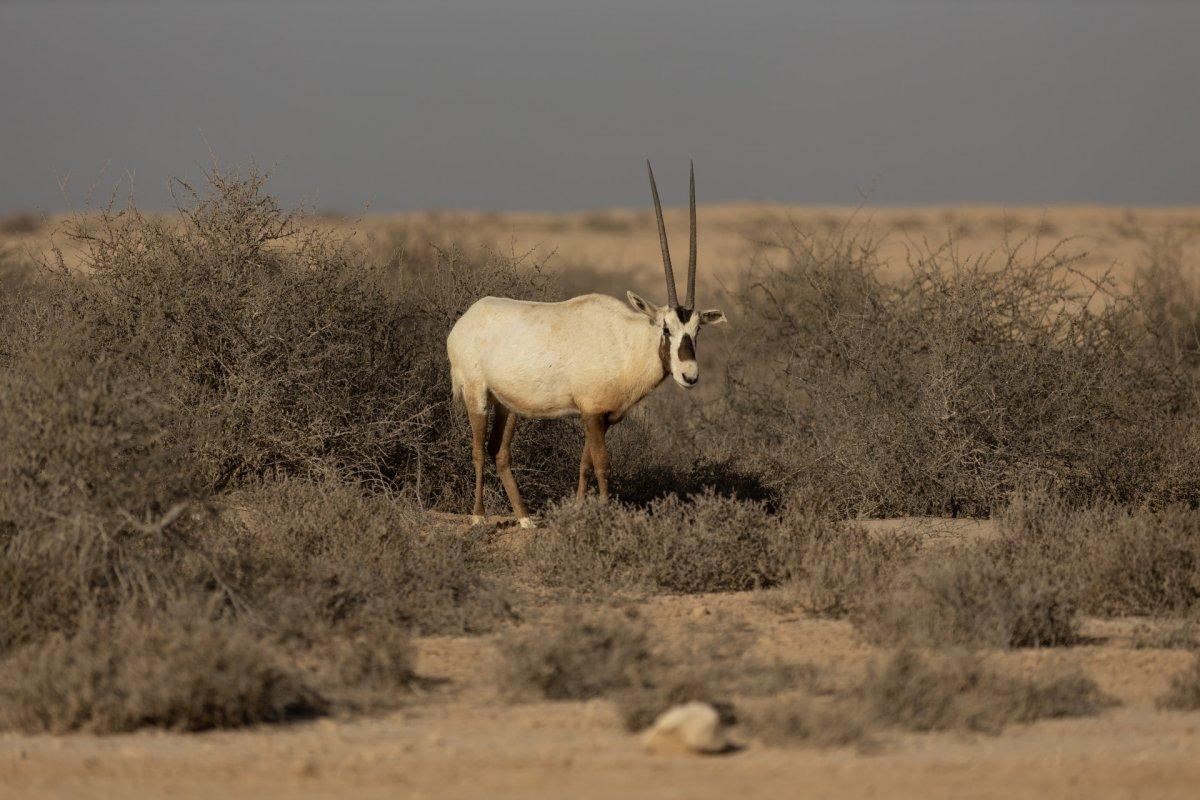
- Name: Arabian oryx
- Scientific name: Oryx leucoryx
- Conservation status:
The Arabian oryx, also known as the white oryx, is a medium-sized species of antelope native to the Arabian Peninsula. After going extinct in the wild at the beginning of the 1970s, it has been reintroduced since 1980 and there are now up to 7,000 individuals.
This oryx is the national animal of Qatar, as well as that of several neighboring countries. In Qatar, it lives in very large, enclosed areas.
2. Arabian gazelle
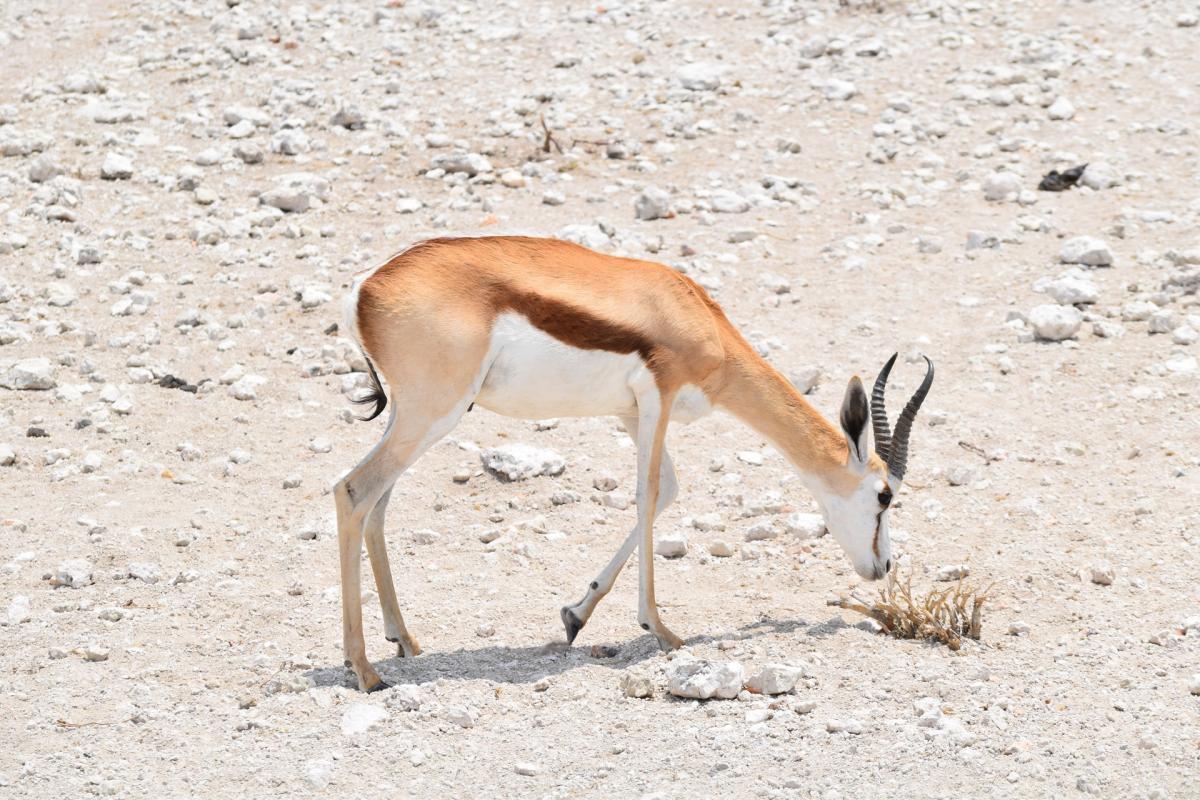
- Name: Arabian gazelle
- Scientific name: Gazella arabica
- Conservation status:
Similarly to the Arabian oryx, the Arabian gazelle lives in protected reserves and it is illegal to hunt it in Qatar. It is also native to the Arabian Peninsula and is listed as vulnerable to extinction because of a lot of reasons.
First of all, the Arabian gazelle suffers from environmental factors such as climate change, predation and hunting, and competition. Then, there are also disturbances such as urban expansion, and other factors like severe droughts and habitat fragmentation and loss.
3. Dugong

- Name: Dugong
- Scientific name: Dugong dugon
- Conservation status:
The dugong is Qatar’s largest mammal. It is a marine animal that can be spotted north of the country’s shores, and Qatar has one of the largest concentrations of dugongs in the world!
This large mammal is closely related to manatees. It lives near the shore of about 40 countries in the Indian and Pacific Oceans and has been hunted for thousands of years for both its oil and meat.
4. Sand cat
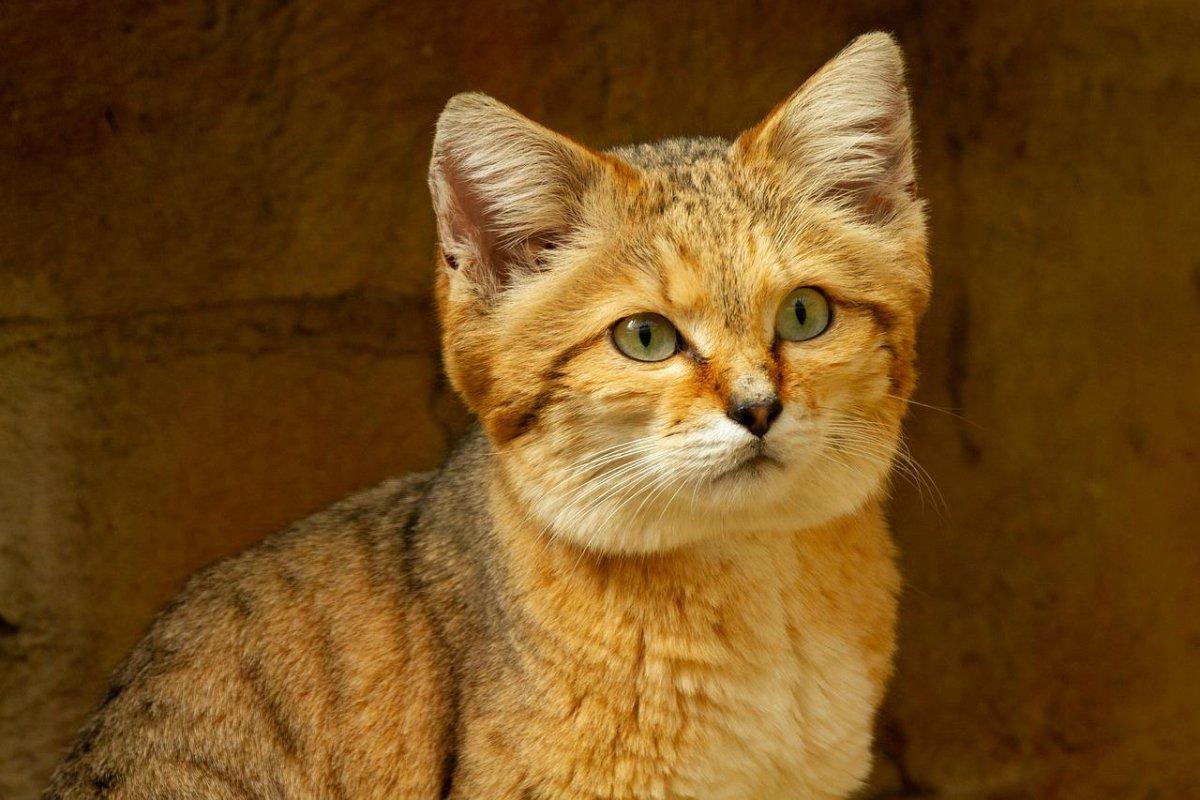
- Name: Sand cat
- Scientific name: Felis margarita
- Conservation status:
The sand cat, also known as the sand dune cat, is a small species of wild cat native to the deserts and stony areas of Africa, the Middle East, western Asia, and the Arabian Peninsula. It is known by the Tuareg people for its ability to kill venomous snakes.
The reason for its ears to be so short and set low, on the side of the head, is for the sand cat to detect potential prey underground: when it comes to feeding, it largely preys on small rodents, but also lizards, fish, and snakes.
5. Camel
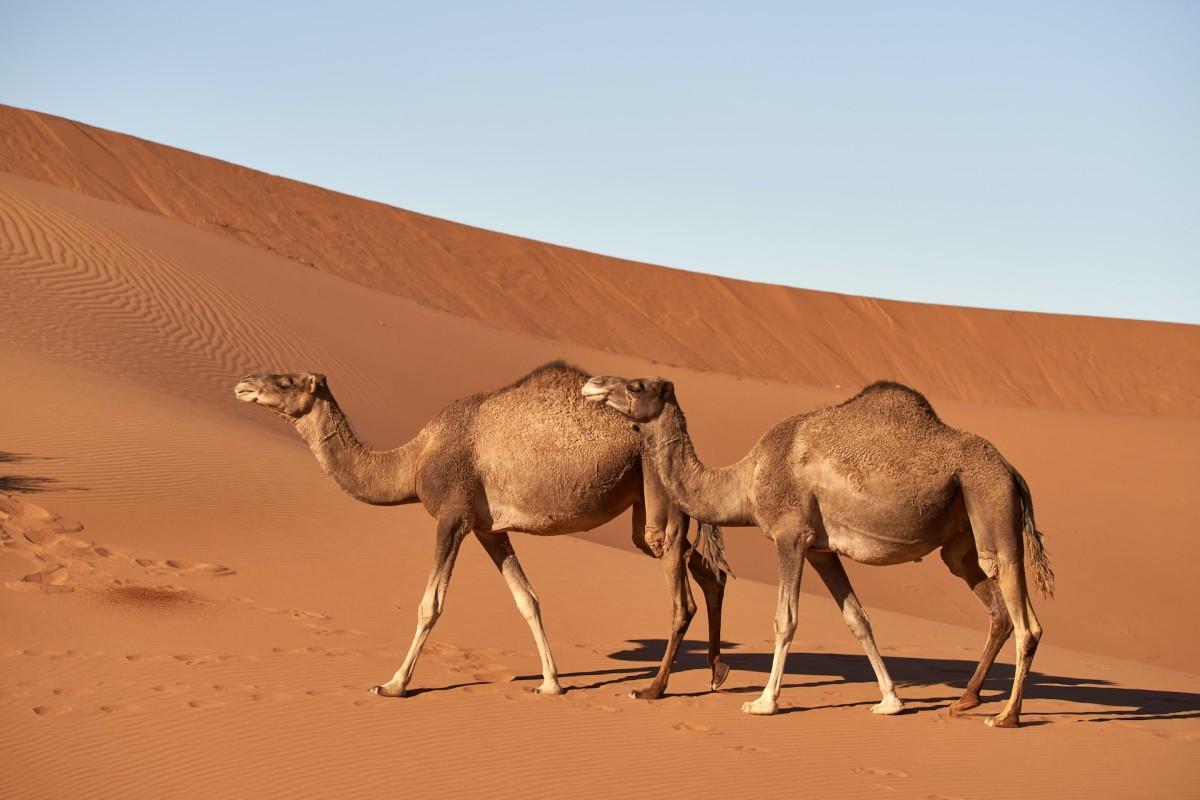
- Name: Camel
- Scientific name: Camelus dromedarius
- Conservation status:
Qatar has the highest density of camels in all of the Middle East. In fact, camels are a group, and the animal you will see in Qatar is the dromedary, or one-humped camel, which makes up for 94 percent of the world’s camel population, the rest being mainly made of Bactrian camels, with two humps.
The camel has long been used as a means of transportation in the desert and is still used in remote areas or for tourism. It has been widely domesticated and is one of the most iconic Arabian and North African animals.
6. Honey badger
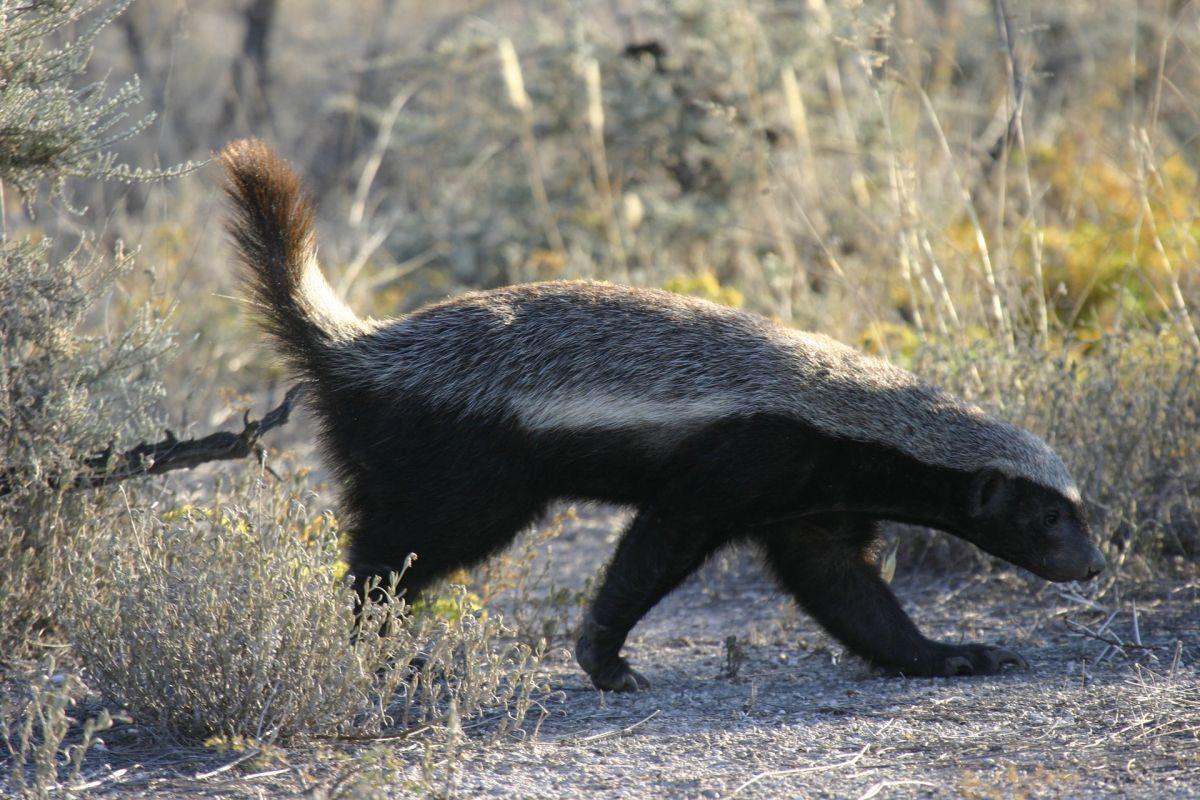
- Name: Honey badger
- Scientific name: Mellivora capensis
- Conservation status:
The honey badger, also known as the ratel, is a species of mustelid with a very wide distribution, from sub-Saharan Africa to western Asia, the Indian subcontinent, and the Arabian Peninsula. Despite its name, it is not related to other badger species but looks much more like a weasel.
This mammal is carnivorous and is surprisingly strong and ferocious for its size, which is why it has very few natural predators.
7. Golden jackal
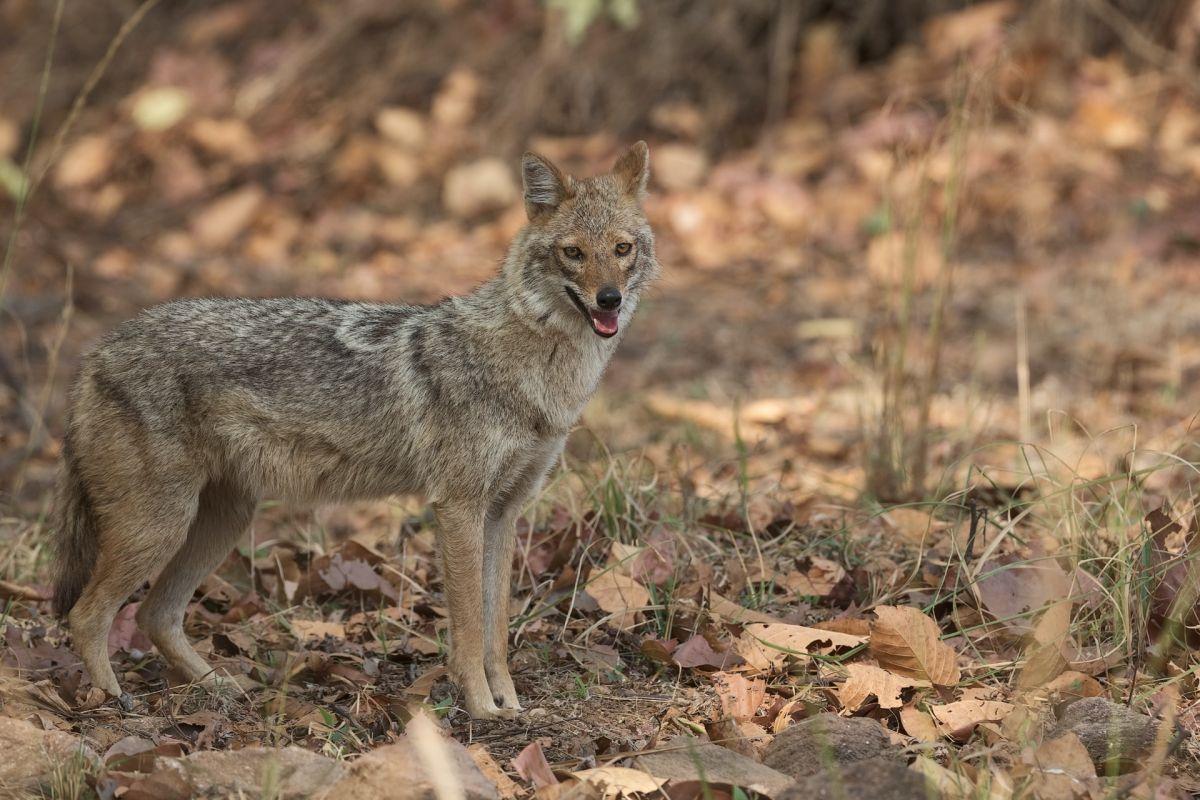
- Name: Golden jackal
- Scientific name: Canis aureus
- Conservation status:
The golden jackal is a species of wolf-like canid native to eastern Europe, the Middle East, the Arabian Peninsula, and the Indian subcontinent. Its range has been growing increasingly over the past decades, primarily because of the decline of its main competitor, the gray wolf.
This jackal is omnivorous and can tolerate dry conditions. It lives in the valleys of Qatar, usually near bodies of water, and can withstand temperatures as low as -35 °C / -31 °F!
8. North African ostrich
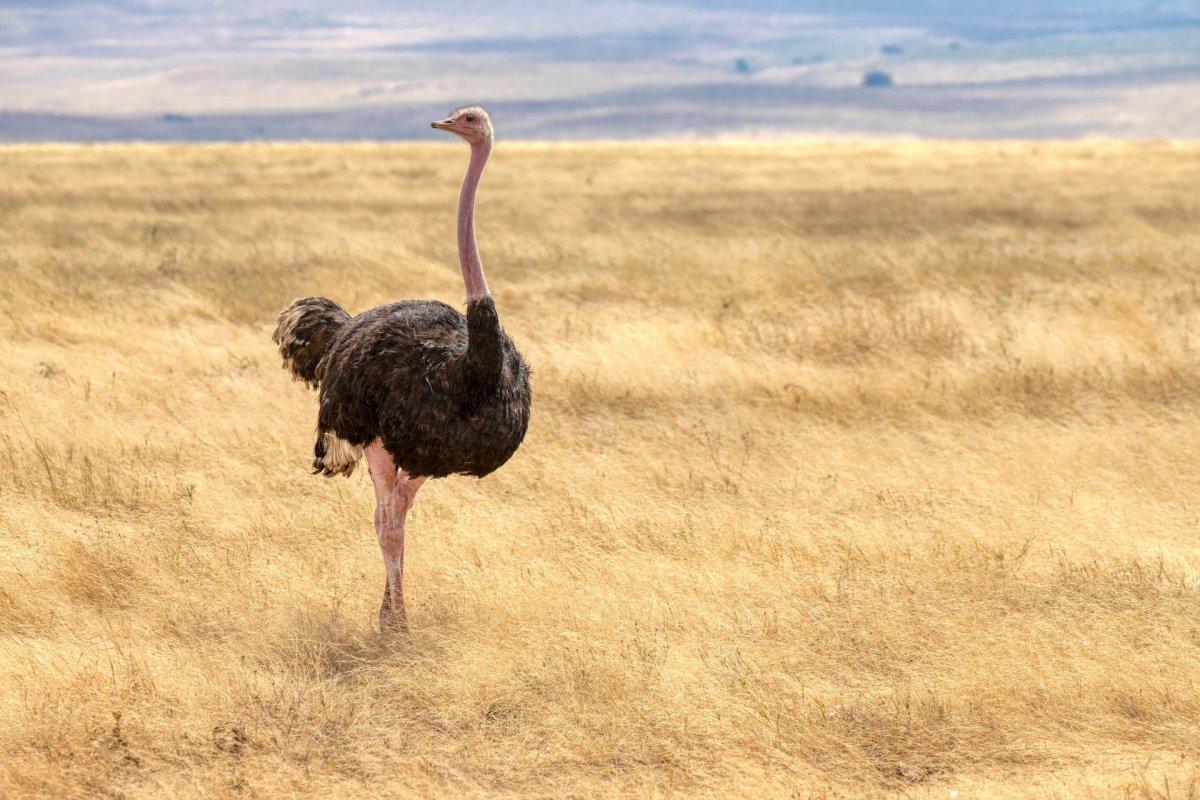
- Name: North African ostrich
- Scientific name: Struthio camelus camelus
- Conservation status:
The North African ostrich, also known as the Barbary ostrich or the red-necked ostrich, is a subspecies of the common ostrich native to North and West Africa. Since it is the largest of the subspecies, it is the largest bird on the planet.
While the local ostrich in Qatar used to be the Arabian ostrich, it went extinct in 1945. Later during the 20th century, the North African ostrich was introduced to the country, and now only lives in Ras Abrouq.
9. Desert long-eared bat
- Name: Desert long-eared bat
- Scientific name: Otonycteris hemprichii
- Conservation status:
The desert long-eared bat is one of two species of bats that can be found in Qatar, alongside the trident bat. It is a species of vesper bat and is native to North Africa and the Middle East.
This bat is most likely carnivorous and feeds on invertebrates such as orthopterans and arachnids, as well as scorpions. Speaking of which, it is probably immune to the venom of scorpions, as multiple individuals have been spotted to be stung by their venomous prey.
10. Socotra cormorant
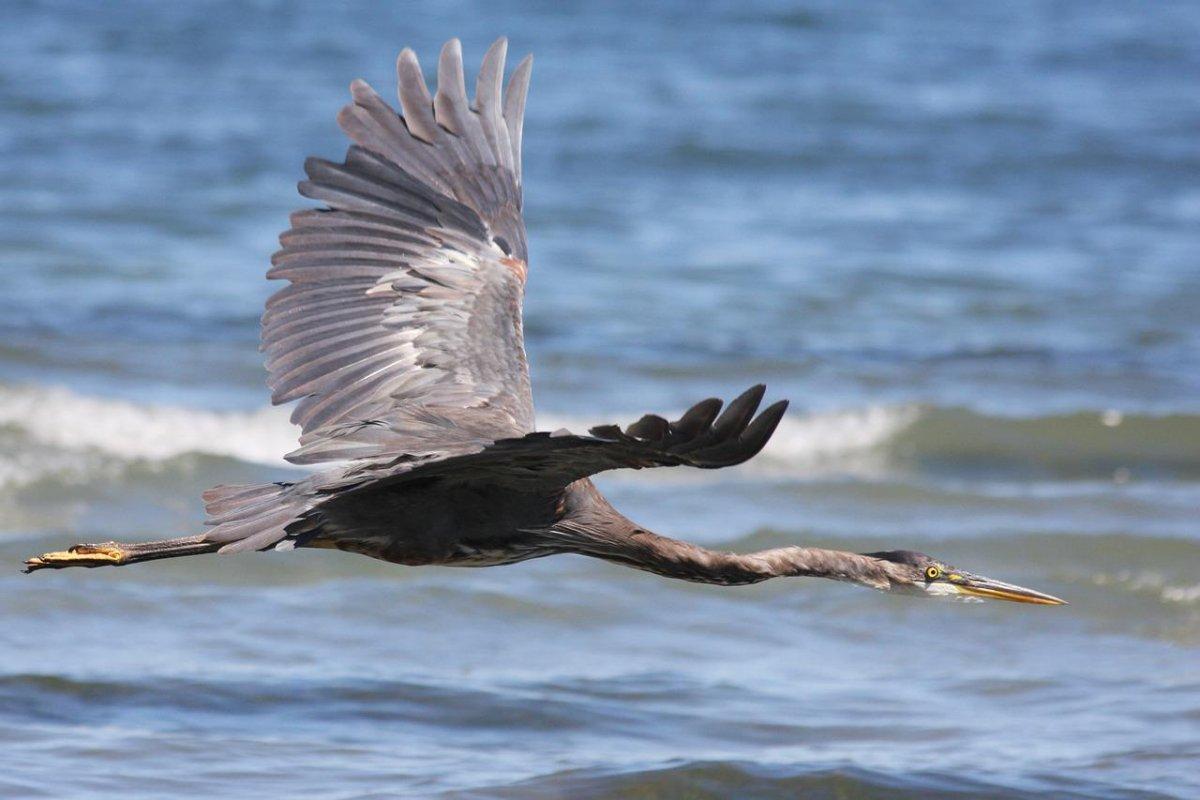
- Name: Socotra cormorant
- Scientific name: Phalacrocorax nigrogularis
- Conservation status:
The Socotra cormorant, also known as the Socotra shag or the Socotran cormorant, is a large species of cormorant endemic to the southeastern parts of the Arabian Peninsula and the Persian Gulf.
In Qatar, it can be found in the only protected nesting colony in the Persian Gulf, off the coast of the country, in a group of about 30,000 pairs. This cormorant is seriously endangered because of marine pollution, coastal development, and human disturbance.
11. Desert horned viper
- Name: Desert horned viper
- Scientific name: Cerastes cerastes
- Conservation status:
Although pretty rare in Qatar, the desert horned viper, also known as the Saharan horned viper, has already been recorded in the country. It is native to northern Africa, but also parts of the Levant and the Arabian Peninsula.
This viper inhabits dry, sandy areas, at elevations of up to 1,500 m / 4,900 ft above sea level. Usually, it tends to stay in areas with a temperature below 20 °C / 68 °F.
12. Desert hedgehog
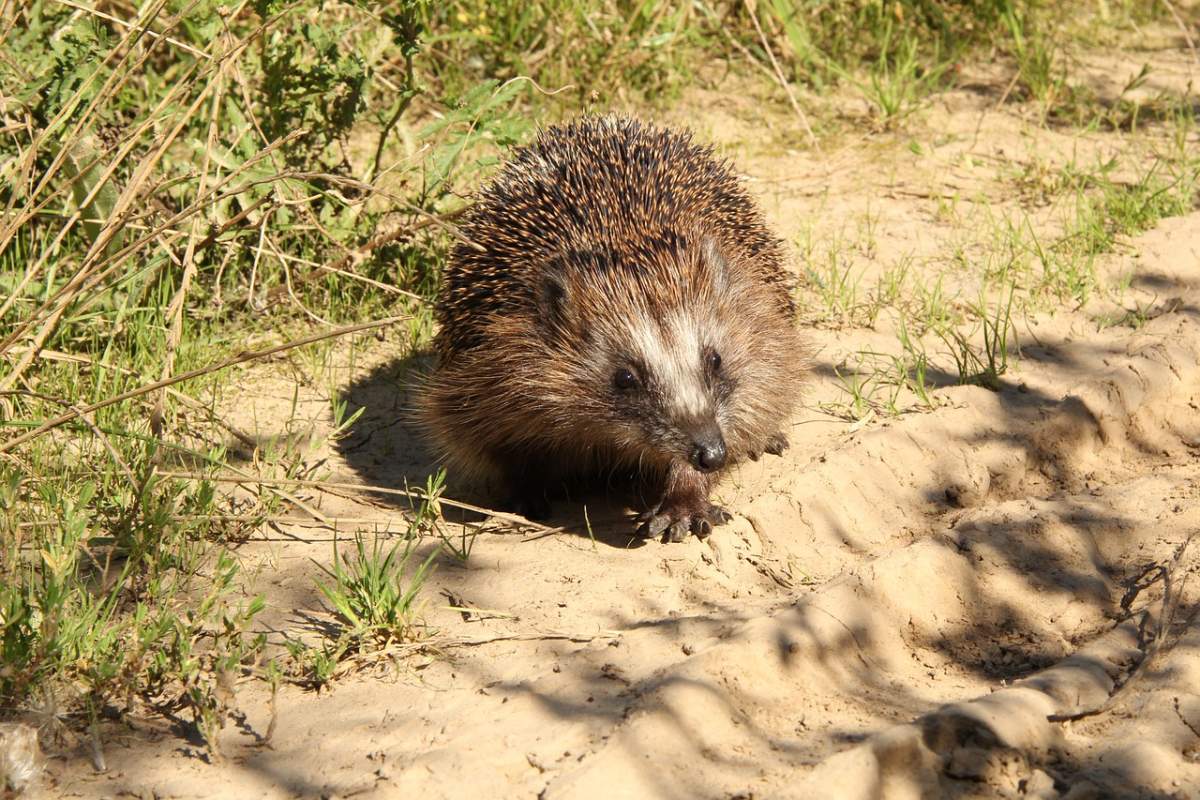
- Name: Desert hedgehog
- Scientific name: Paraechinus aethiopicus
- Conservation status:
The desert hedgehog is a species of mammal native to North Africa and the Arabian Peninsula. It is one of the smallest species of hedgehogs and is covered in quills, just like other hedgehogs.
This hedgehog is easily recognizable due to its dark muzzle and large ears, ideal for thermoregulation. Because its quills are larger than that of other relatives, it is particularly difficult to catch a desert hedgehog.
13. Humpback whale
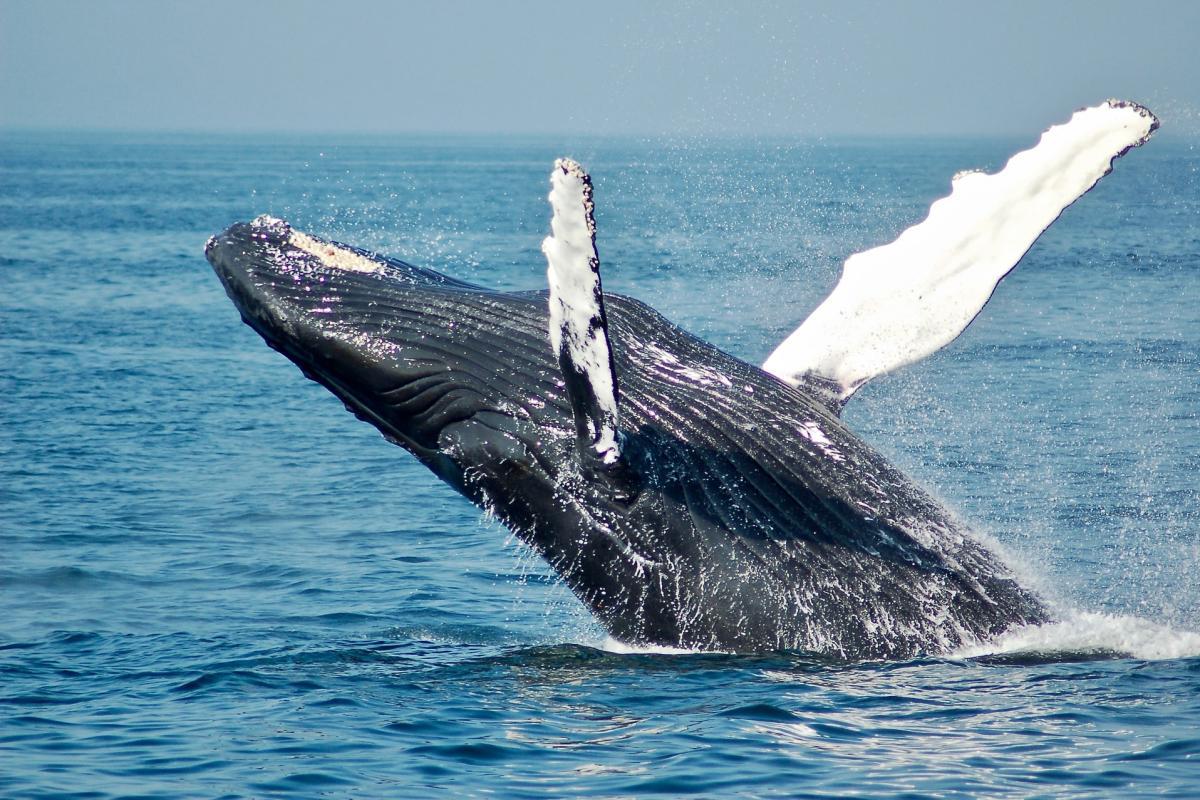
- Name: Humpback whale
- Scientific name: Megaptera novaeangliae
- Conservation status:
If you are lucky enough, you might see a humpback whale breaching the surface, off the coast of Qatar. This spectacular animal is particularly loved by whale watchers due to its unique behavior and fantastic figures.
The humpback whale inhabits all seas and oceans around the world, and migrates up to 16,000 km / 9,900 mi per year! It uses bubbles to catch its prey and feeds on krill and small fish.
14. Egyptian vulture
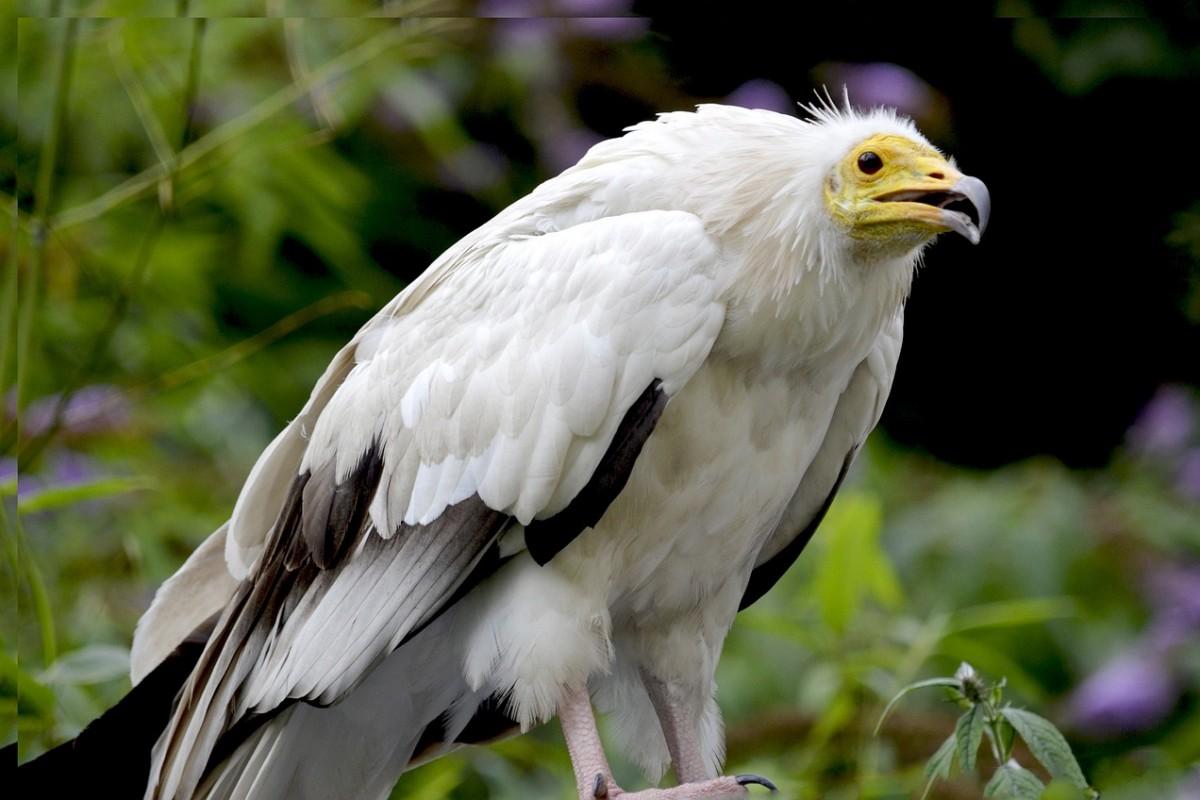
- Name: Egyptian vulture
- Scientific name: Neophron percnopterus
- Conservation status:
Despite its name, the Egyptian vulture is not endemic to Egypt at all: it can be found on the Iberian Peninsula, in North Africa, throughout sub-Saharan Africa, on the Indian subcontinent, in Western Asia, in the Middle East, and on the Arabian Peninsula.
Also known as the white scavenger vulture or the pharaoh’s chicken, it is widely despised for its unusual appearance and tendency to feed on carrion, just like other vultures.
15. Common dolphin
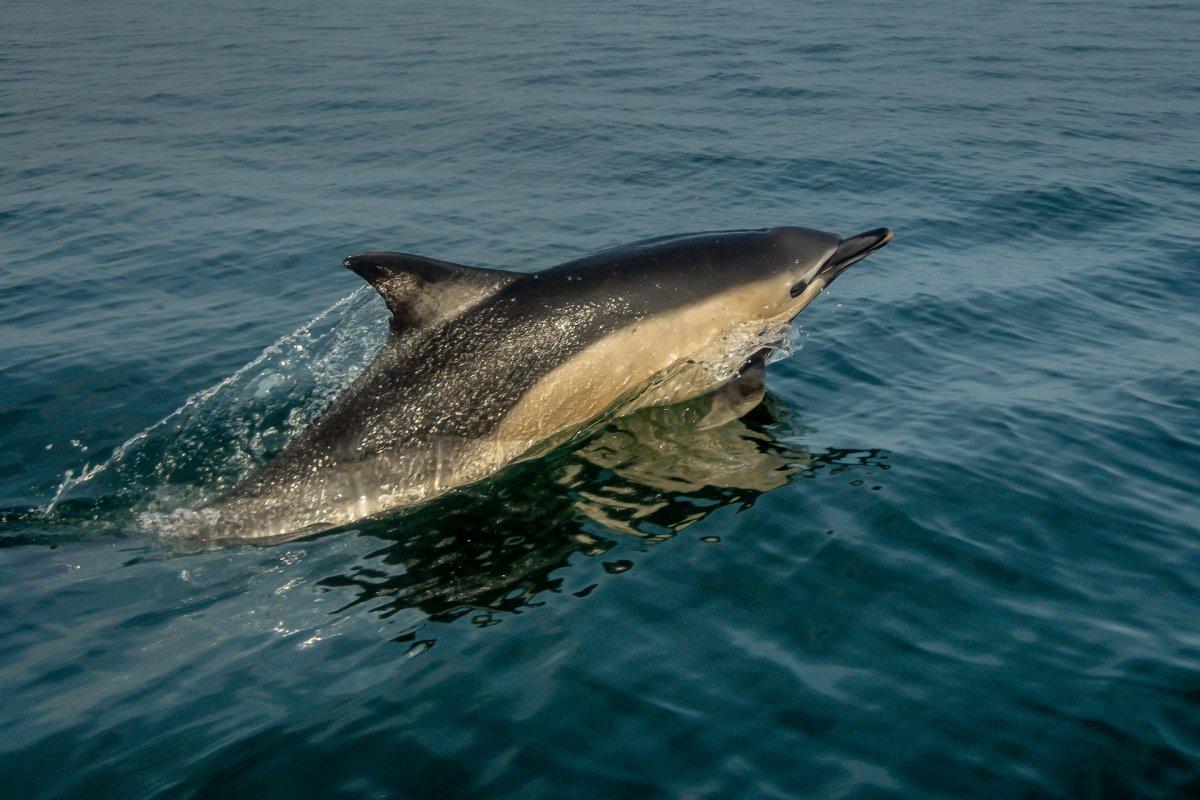
- Name: Common dolphin
- Scientific name: Delphinus delphis
- Conservation status:
With all the wonderful animals there are in Qatar, it definitely is an incredible country to visit: there are even dolphins!
The common dolphin is the most abundant species of cetacean in the world, with about 6 million individuals. It inhabits warm-temperate and tropical waters of the world and lives in coastal, shallow waters, which is why it is not that difficult to spot. It is known for its use of whistles to communicate with others, and gathers in large aggregations of hundreds or even thousands of members!
16. Indian gray mongoose
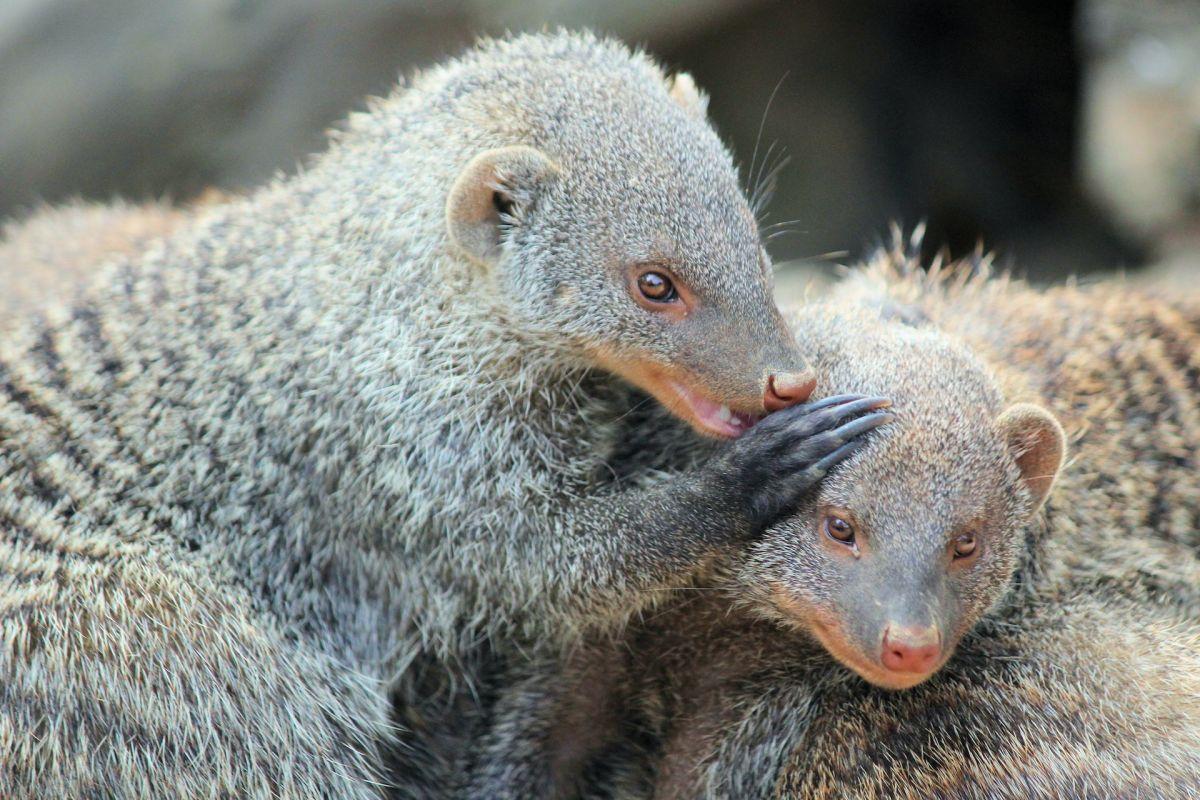
- Name: Indian gray mongoose
- Scientific name: Urva edwardsii
- Conservation status:
The Indian gray mongoose is a species of mongoose native to the Indian subcontinent and Western Asia. It inhabits scrublands, cultivated fields, and open forests, often near human habitation.
This mongoose digs or steals a burrow for itself, and hides under rocks or bushes. It is unusually bold for a mongoose and is an adept climber which feeds on lizards, birds’ eggs and hatchlings, rodents, snakes, and invertebrates.
17. Green sea turtle
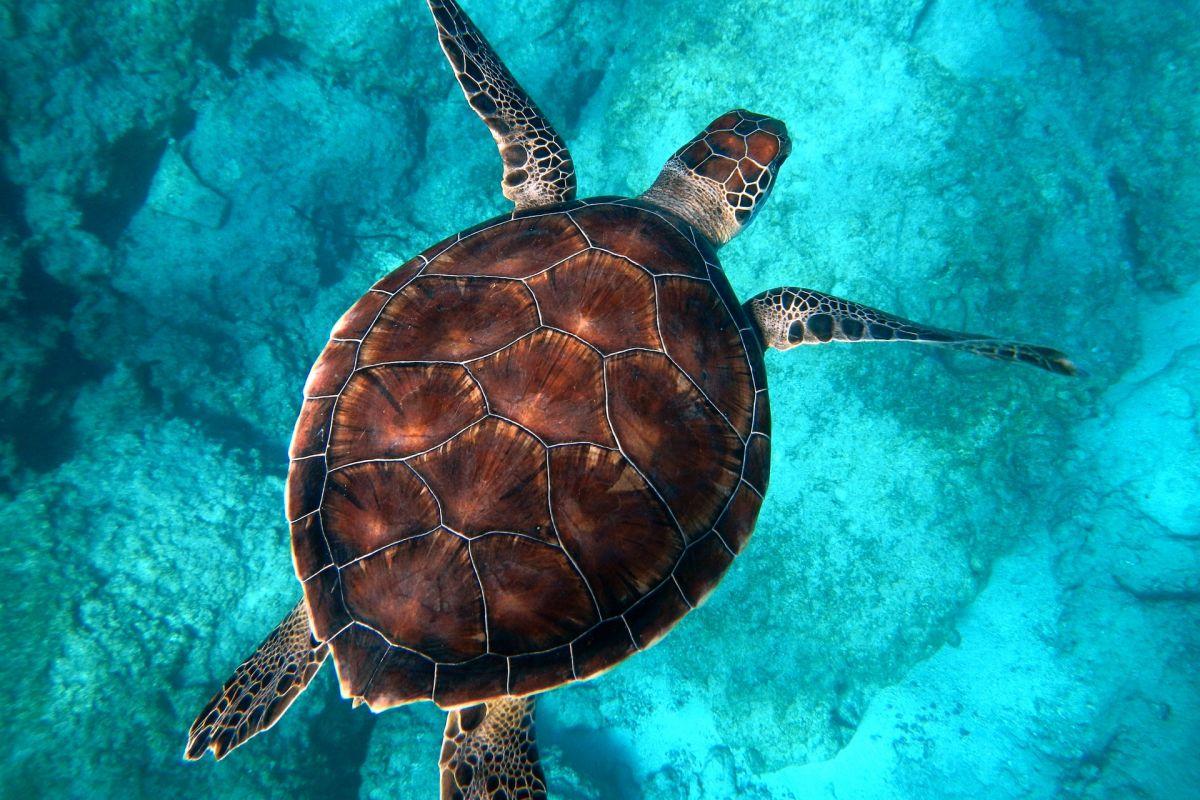
- Name: Green sea turtle
- Scientific name: Chelonia mydas
- Conservation status:
The green sea turtle, also known as the green turtle, the black turtle, or the Pacific green turtle, is a species of aquatic turtle native to tropical and subtropical seas of the world. Although primarily aquatic, it can sometimes be found on the coasts or islands of Qatar, where it comes to nest.
This sea turtle is seriously endangered: although it is illegal to collect, harm or kill one, it suffers a lot from poaching and hunting for food, but also from pollution, fishing accidents, and habitat loss.
18. Steppe eagle
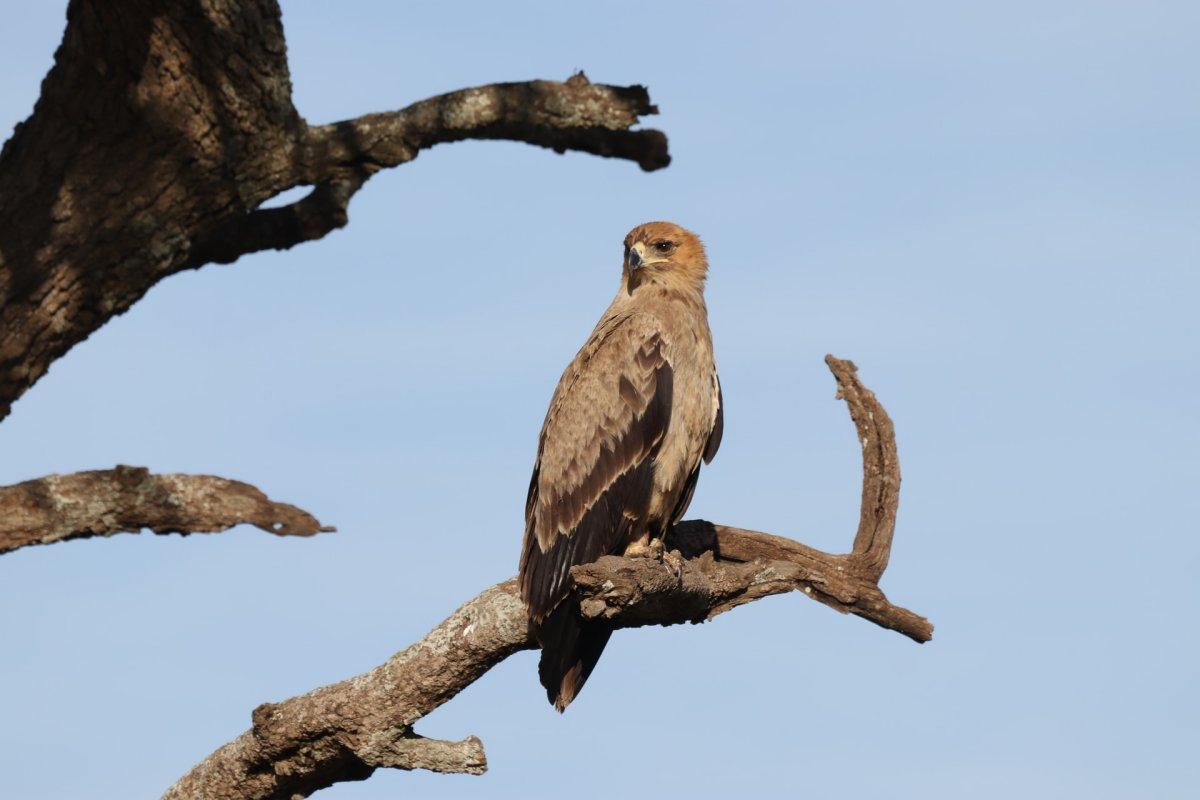
- Name: Steppe eagle
- Scientific name: Aquila nipalensis
- Conservation status:
The steppe eagle is a winter visitor in Qatar. It is a pretty large species of bird of prey native to the steppes of Africa and Asia, and is a migratory bird: it inhabits southern Africa to Central Asia and Russia, depending on the season.
The main reasons for the steppe eagle to be listed as endangered are steppe fires, climate change, electrocutions, and persecution. Its population is declining by more than 50 percent at the moment.
—
So there you have them, these were my 18 wild animals in Qatar. I hope you enjoyed this list and that you learned something new today.
In case you want to learn more about Qatar wildlife, feel free to keep reading, as I still have lots of things to tell you about:
Endangered Animals of Qatar
This is definitely the saddest part of the list, but it is very important to raise awareness. Because of this, let’s go through the list of endangered animals in Qatar.
Here are the animals in danger of extinction in Qatar.
- None
- Whitespotted wedgefish
- Green sawfish
- Sharpnose guitarfish
- Sand tiger shark
- Hawksbill turtle
- and 7 more…
- Steppe eagle
- Whale shark
- Green turtle
- Saker falcon
- Smoothtooth blacktip shark
- and 16 more…
To see the full list of endangered species in Qatar, head over to the International Union for Conservation of Nature’s Red List.
What is the National Animal of Qatar?
The national animal of Qatar is the Arabian oryx.
The Arabian oryx, also known as the white oryx, is a very important symbol in the Arabian Peninsula. Outside of Qatar, it is also the national animal of Jordan, Oman, Bahrain, and the United Arab Emirates.
This oryx used to be extinct in the wild, but reintroduction efforts raised its numbers to 6,000 to 7,000 nowadays. It was the mascot for the 2006 Asian Games in Doha, is featured on the local airline Qatar Airways and is said to be the origin of the myth of the unicorn.
How Many Animals Native to Qatar?
What is the diversity of native animals in Qatar?
Let’s look at the total number of species of Chordata (mammals, birds, fishes, and reptiles).
Total number of animal species in Qatar: 727 (5,029 in total in West and Central Asia)
Are there spiders in Qatar?
Similarly to a lot of other Asian countries, there are definitely spiders in Qatar. While there are most likely more of them, at least 4 species have been confirmed and identified in the country: the brown widow spider, the Mediterranean recluse, Uroctea limbata, and Zimiris doriae.
Are there any snakes in Qatar?
Yes! There are quite a few snakes in Qatar in fact.
Some of them are nonvenomous and pretty inoffensive such as Jayaka’s sand boa, but others are much more dangerous. The snakes you will find in Qatar are the Arabian horned viper, the Afro-Asian sand snake, Clifford’s diadem snake, the crowned dwarf snake, the crowned leaf-nosed snake, the desert black snake, the flowerpot snake, the hooded malpolon, Hardwicke’s rat snake and the Sindh saw-scaled viper.
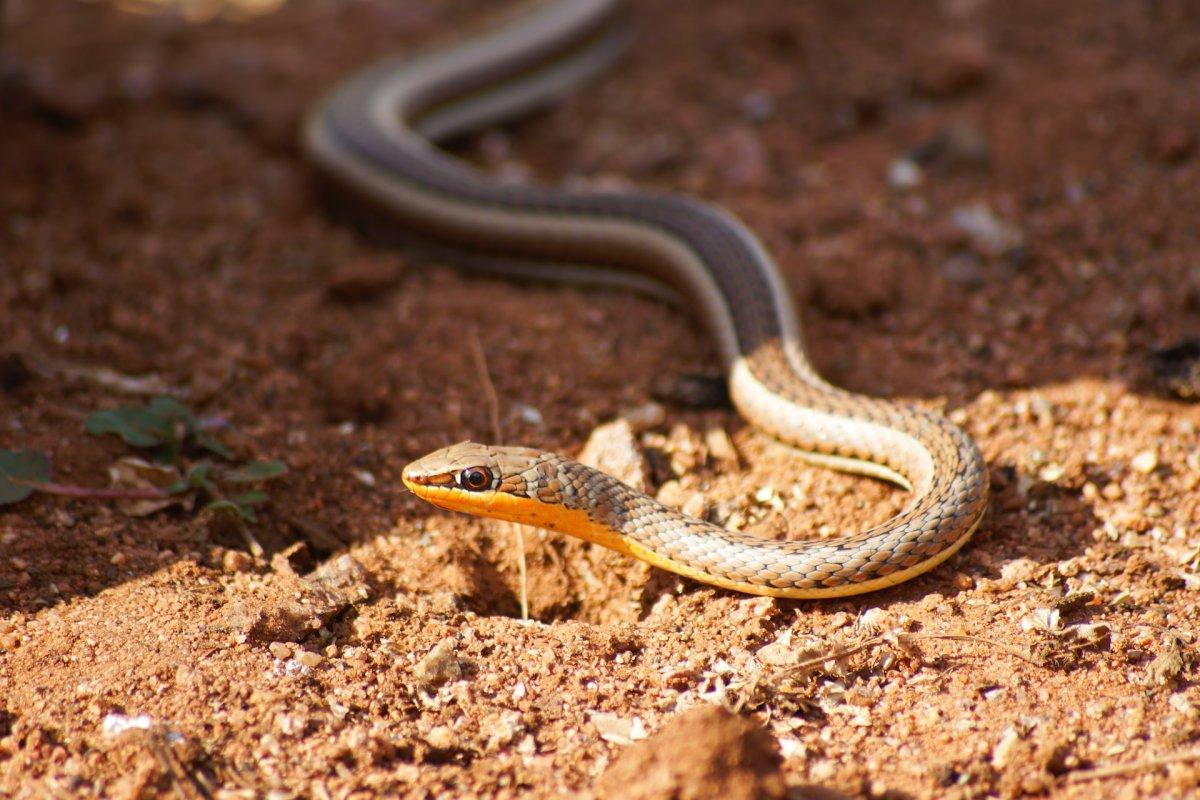
Afro-Asian sand snake
More About Animals in the World!
Loved these Qatar animal facts? Want to see what animals live in other countries?
Then check out these posts:
Or click here to see ALL the facts up on the blog! Spoiler alert: there’s A LOT of them.
Share the knowledge! Click on the buttons below to share information about these famous animals in Qatar with your friends, and help them learn more about the world 🙂
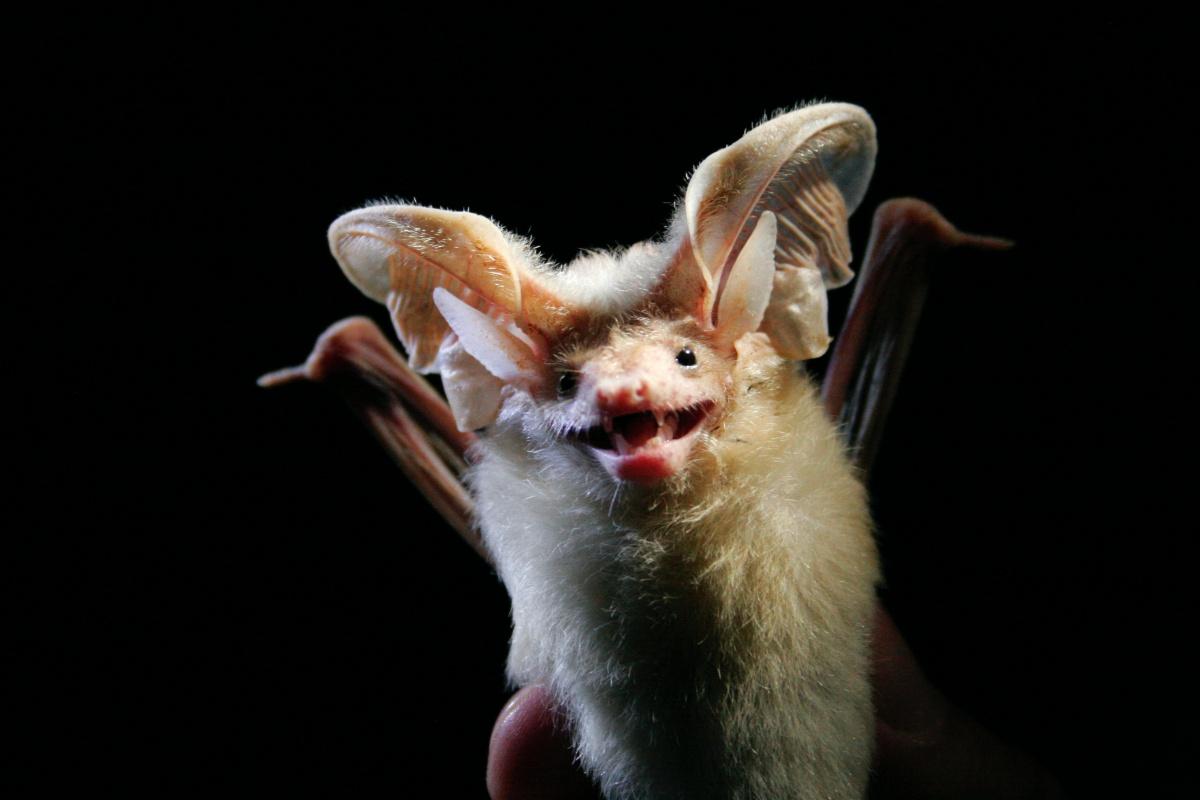
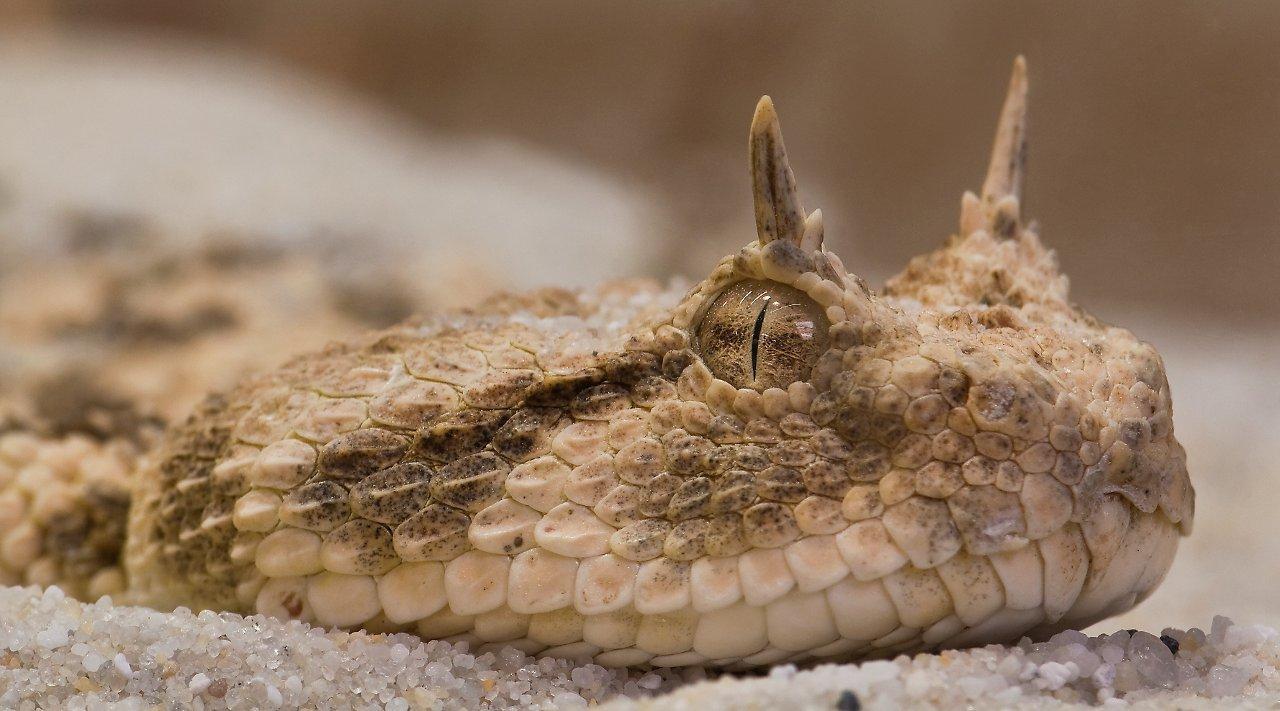

![18 Wild Animals in Jamaica [Wildlife in Jamaica]](https://www.kevmrc.com/wp-content/uploads/2022/08/18-wild-animals-in-jamaica.jpg)
![21 Wild Animals in Gambia [Wildlife in Gambia]](https://www.kevmrc.com/wp-content/uploads/2022/12/21-wild-animals-in-gambia.jpg)
![10 Wild Animals in Lesotho [Wildlife in Lesotho]](https://www.kevmrc.com/wp-content/uploads/2022/12/10-wild-animals-in-lesotho.jpg)